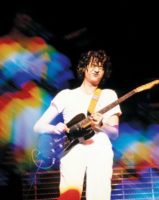
Everything You Wanted to Know About the B-Bender, a Guitarist's Ultimate Secret Weapon
I’ve always loved secret weapons—those clever little modifications, alterations, gadgets, whatever, that expand a guitar’s versatility or functionality without drastically altering its appearance. I’m talking about anything from an EVH D-Tuna to a four-way switch on a Telecaster to aftermarket titanium blocks in a tremolo.
For my money, however, the ultimate secret weapon is a B-bender. For the uninitiated, a B-bender is a device that lives in- or outside your guitar and allows you to pull—usually with some sort of arm, palm or hip movement—your guitar’s B string up a perfect whole step. So, an open B would become an open C#, a C (first fret on the B string) would become a D and so on—until, of course, you “release” the bender.
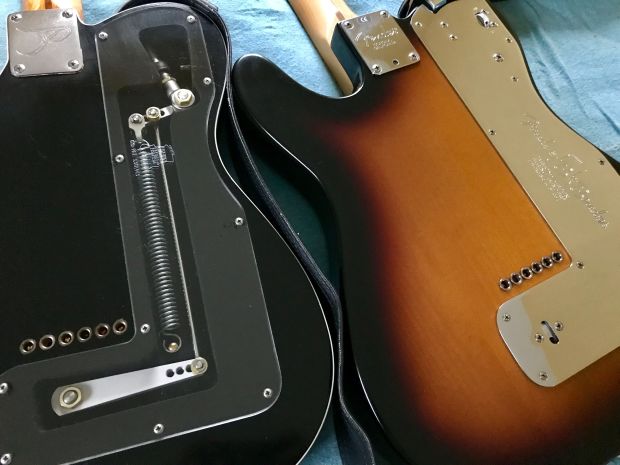
Although this simple explanation might not convey the magic and wonder of a B-bender, suffice it to say the bender allows guitarists to create super-sweet, otherwise-impossible licks and chord voicings (including my favorite, sus2 to major), the kind that make you close your eyes and smile—while you’re playing guitar. And, oh yeah, it sounds cool as hell.
It’s fitting to call the B-bender a secret weapon because, even though it’s been around for more than 50 years, it’s still something of an albino deer—a rarity, mystery, a curiosity—to a surprisingly large segment of the guitar-playing population, especially rockers. When guitarists see my B-benders at my bands’ New York–area gigs, their reactions run the gamut from “What the hell is that?” to “My cousin’s college roommate’s daughter-in-law saw one of these once!” Only twice in my 19 years of B-bending has someone said, “I have one too.”
The B-bender’s relative obscurity is mind-boggling—and it really needs to stop. Maybe the bender is too strongly associated only with country-style guitar. After all, B-benders have graced the axes of Clarence White, Marty Stuart, Brent Mason, Albert Lee, Ricky Skaggs, Will Ray, Steve Wariner and Diamond Rio’s Jimmy Olander, to name just a few. But let’s not forget that undisputed rock gods—not to mention Guitar World cover stars—Jimmy Page, Keith Richards, Pete Townshend and James Hetfield (check out Metallica’s “The Unforgiven II”) have recorded with B-benders; Page even made the bender a vital part of his sound for a few years. And is there anyone out there who hasn’t heard the B-bender solo on the Eagles’ “Peaceful Easy Feeling” 47 billion times?
In other words, despite reputations, implications and associations, B-benders get around, and they can be used by anyone, anywhere.
BENDING THE RULES WITH A B-BENDER
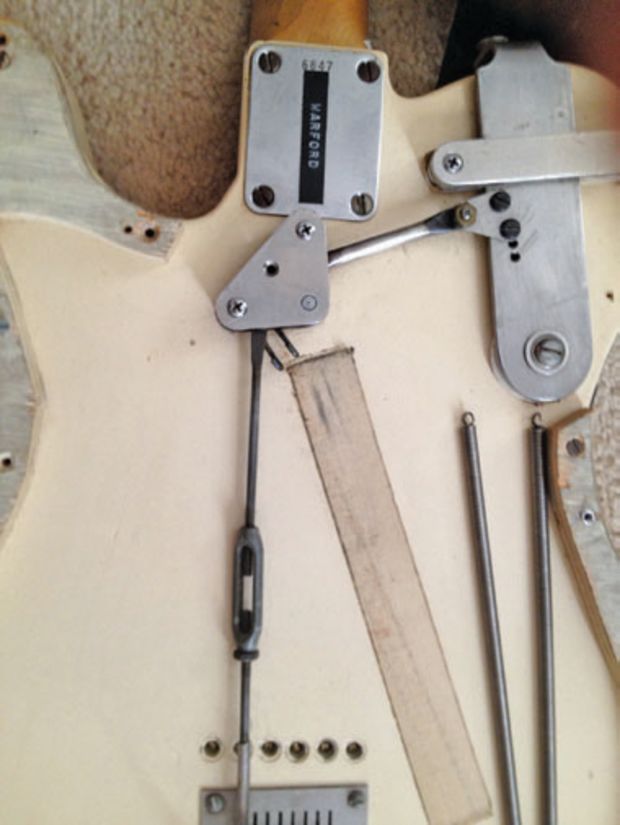
Why play a bender?
“The simplest answer is that it enables the player to do things that are simply impossible otherwise,” says Gene Parsons, who invented and patented the original B-bender—also known as the Parsons/White StringBender—in 1967. “It allows the guitarist to play with a very characteristic and pleasing sound, and it just adds a whole new dimension of possibilities.”
The idea for the bender kicked in after Parsons’ friend and collaborator, guitarist Clarence White, complained that he needed “a third hand” to play a chiming harmonic lick—and then bend the string—at a Gosdin Brothers recording session. That day, Parsons literally provided the extra hand required to play the lick (bending the string behind the nut, à la Jimmy Page on “Heartbreaker” or John 5 on “Behind the Nut Love”); after the session, however, Parsons started working on the device that became the Parsons/White bender.
Since then, Parsons—a multi-instrumentalist and former member of Nashville West, the Byrds and the Flying Burrito Brothers—has gone on to install benders for Page, Hetfield, Richards, Townshend, Stuart, Ronnie Wood and, well, way too many people to list here. He even installed a long-stroke B-bender in my Palir Titan this past October, as in, he still does the bulk of the work himself at his northern California shop.

The Parsons/White bending method involves pulling your guitar’s neck downward, toward the floor, while playing a lick or chord that incorporates the B string, and letting your guitar strap—and a beautiful, lightweight system of rods, springs, levers and spindles—do the rest.
Bob Warford—probably the second person, ever, to play a B-bender (after White)—agrees with Parsons. “The bender adds fluidity to your playing that simply cannot be done by hand—not to mention licks that seem impossible when heard, even though some of those licks aren’t speedy, but relaxed,” says the guitarist, who—along with his father, a quality assurance engineer—designed and built a one-of-a-kind B-bender, a modified version of Parsons’ design, in 1968.
Warford, who occasionally filled in for White at recording sessions, has worked with Linda Ronstadt, the Everly Brothers (check out the video below), Roy Orbison, Gib Guilbeau, Herb Pedersen and many more. “I’ve always said the idea is not to sound like a cheap one-pedal steel guitar, but to use the effect—and to try not to over-use it—for that fluidity.”
Charlie Starr, frontman of Southern rock powerhouse Blackberry Smoke, is hooked on the B-bender’s truly one-of-a-kind sound. “I love it because it really sounds like an instrument all its own,” he says. “Even though it’s a guitar, it takes on the vibe of a different animal.”
These days, Starr, whose main bender influences include White and Stuart, is rocking a late-Nineties Fender Telecaster with a Parsons/Green B-bender, one of the few production-model B-bender guitars in history (now discontinued). Gibson’s take on the B-bender, an ash-bodied Music City Jr. with a Joe Glaser bender, enjoyed a limited run in 2013. Washburn offered the Forrest Lee Bender—an acoustic guitar—in 2012.
Mind you, it can take some time to get used to the bender and to adapt it to your playing style.
“[My] Telecaster has the StringBender mechanism that took me about two years to come to terms with,” joked Page in the July 1986 issue of Guitar World. “No, not really, but I’d say it took a year, honestly. Considering it’s only moving two frets or whatever, you can see how slow it is for me to get things together. [laughs] To be truthful, it was difficult to work through it—up the neck, so to speak. But it came to the point that as it was such a good thing to cheat with.”
Of course, back then, there weren’t any YouTube B-bender lessons for Page to watch!
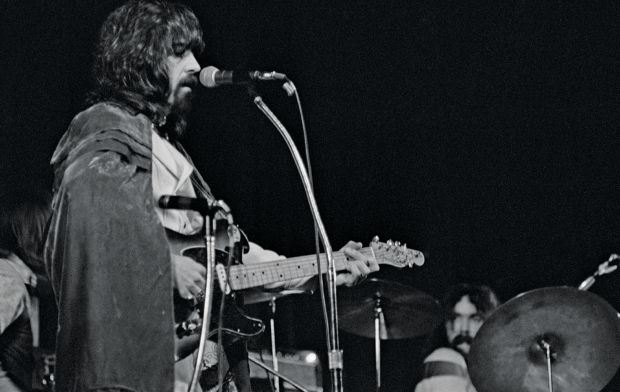
In terms of approach, Warford and Parsons recommend a cool head and a steady hand. “Don’t be in a hurry to apply or release the bender,” Warford says. “Be a little lazy, even behind the beat. Fast actuating and release sounds frantic.”

Parsons adds: “For beginners, the initial impulse is to jerk the neck down and up, but a slow, gentle approach is the ticket. Where the real music is found is in the journey from one note to another—not so much the destination. This is why the long-stroke StringBender has gained such popularity in recent years.”
Of course, too much of a good thing can be horrible, and that applies to B-bender licks. “Beginners might get so wrapped up in using the String-Bender that they’ll forget the cool stuff they did before they got it,” Parsons says. “I’ve heard new players using the bender almost exclusively. That’s not good. Use the bender to augment, not to replace what you did before.”
Starr has a slightly modified take on the topic: “Don’t over-do it—a little bit of B-bending goes a long way, so use it to serve the song,” he says. “Or, if ‘less is more’ isn’t your style, just go apeshit with it. You can’t go wrong either way!”
Simply put, playing a B-bender can help set you apart from the pack—unless you’re Brad Paisley, that is. “A B-bender has a very distinctive sound that is awesome, but it says ‘B-bender guitar’ the minute I hear one,” Paisley told Guitar World in 2013.
“Most of my live guitars have G-benders in them. I don’t know whether a G-bender allows you to do a whole lot more than what you can already do with your finger, but it’s neat to use it when you’re out of ideas. That’s why I used it with the slide on ‘Beat This Summer,’ which feels like a song by the Eagles. I thought, What would Don Felder do? What would be my version of that? You can’t really tell what I’m doing on the record, but I know that as soon as I play it on television that kids will be ordering their slides and G-benders.”
I’m actually about to convert my Gibson Music City Jr. from a B-bender to a G-bender—an easy adjustment—just to see what Paisley is talking about. It’s always wise to shake things up!
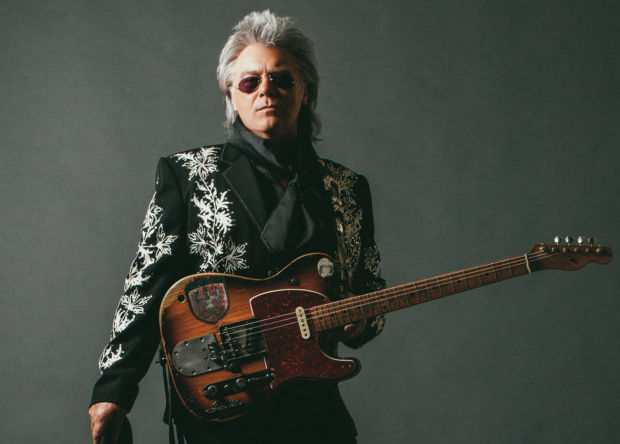
FEELING THE PULL OF THE BENDER
Parsons offers these examples of “otherwise impossible” licks you can “pull off” with a B-bender:

● Bending two strings at the same time. You bend the G string (the normal way, with your fingers) up a full tone and simultaneously “pull” the B string up a full tone. Or one bend can go up as the other goes down, resulting in contrapuntal bending notes. [Note: There also are G-benders, not to mention double-benders, that could bend that G for you.]
● Bending a string out of a chord.
● Playing pedal steel–style licks.
● Manually bending the B string, then adding a “pull” to achieve a two-tone raise for expressive blues licks.
A B-bender also can be used to replicate slide guitar sounds in some instances; I use it when playing the intro and solo to George Harrison’s “My Sweet Lord” (below).
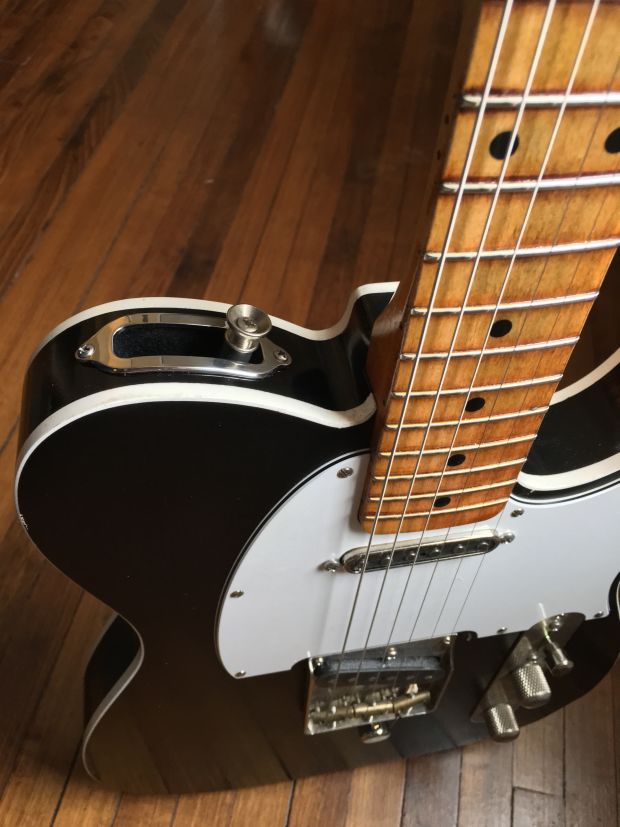
BENDING ON A BUDGET
B-benders come in all shapes and sizes, and there’s one for just about every budget. A Parsons/White StringBender installation starts at $1,402; Evans Pull String installations start at $1,195 and McVay Benders (Paisley’s bender of choice) will run you around $1,000. Of course, you can go the Reverb/eBay route and find a used ax with a bender already installed—or get yourself a Joe Glaser bender, as installed by Glaser and his team at Glaser Instruments in Nashville; Glaser’s many fans include Jimmy Olander and Brent Mason.
By the way, Parsons also custom-builds his own high-quality Gene Parsons Custom Shop StringBender Guitars in collaboration with Lee Rider; besides being U.S.-made, the guitars feature hand-wound pickups, benders (of course) and a distinctive headstock logo—Gene Parsons’ face! Head here and here for more information.
Of course, not all benders live inside your guitar; there are plenty of “external” benders, including palm benders, the B-Blender, the Rolling Bender, several cool Hipshot products and more—all of which cost less than “internal” benders, which involve a good deal of routing (not that there’s anything wrong with that). While Tele-style guitars are probably the most common bender “hosts,” benders also can be found on or in Les Paul–style bodies, acoustic guitars, custom Ernie Ball Music Man models, Strats and, well, let’s just say almost anything is possible.
14 MIND-BENDING SONGS
Here’s some recommended bender listening for you. While you’re at it, be sure to subscribe to The Jimmy O Show, Jimmy Olander’s YouTube Channel, where you’ll find B- and G-bending aplenty, not to mention some fine guitar playing.
● The Byrds, “Tulsa County”—Ballad of Easy Rider (1969)
● The Everly Brothers, “Cuckoo Bird”—Walk Right Back: The Everly Brothers on Warner Brothers, 1960-1969 (1993)
● The Byrds, “Buckaroo”—Live at the Fillmore 1969 (2000)
GUITARIST: Clarence White
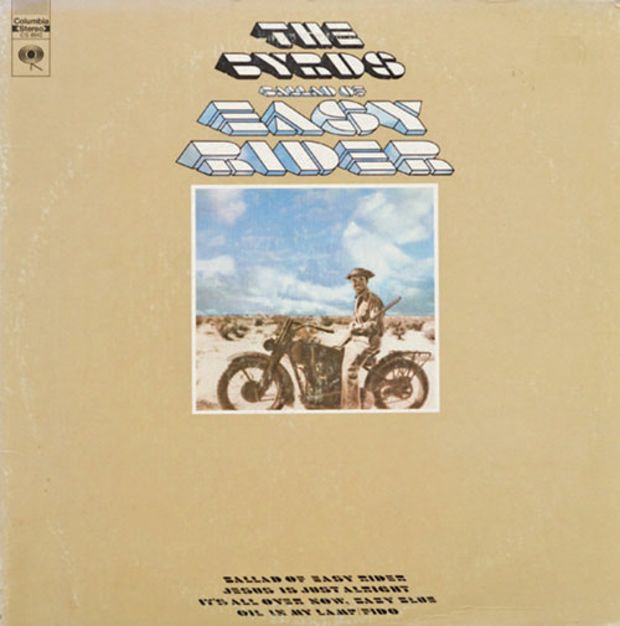
There are so many White performances to choose from—he recorded ceaselessly with the B-bender from the moment it was installed in his Tele until his death in July 1973; however, there’s no denying the brilliance of these three 1969 performances.
In terms of full Byrds albums to explore, check out Untitled and the rest of Live at the Fillmore 1969 and Ballad of Easy Rider, all of which feature Gene Parsons on drums, vocals, backing vocals and more (Parsons also appears on “Cuckoo Bird”). For some visuals to go with the “Tulsa County” guitar solo, head here; it’s a brief clip of me playing it on my Fender Parsons/Green Tele.
● Dave Edmunds, “Sweet Little Lisa”—Repeat When Necessary (1979)
GUITARIST: Albert Lee
As Lee told me in 2014, “I was mesmerized in the late Sixties listening to Clarence White bend strings, thinking, How did he do that? It’s too perfect to be a regular string bend!” Since we’re recommending a Dave Edmunds song, be sure to also check out “Born Fighter” by Nick Lowe, Edmunds’ Rockpile bandmate.
● The Rolling Stones, “One Hit (to the Body)”—Dirty Work (1986)
● The Honeydrippers, “Sea of Love”—Volume One (1984)
GUITARIST: Jimmy Page
Although Page used his Parsons/White bender in Led Zeppelin’s later years and with the Firm, these two mid-Eighties guitar solos showcase some serious creativity and arguably represent the yin and yang of his B-bender playing. That said, it’s still bizarre to hear Page playing with the Stones! (For more about this interesting mid-Eighties classic-rock pairing, head here.)
● Eagles, “Peaceful Easy Feeling”—Eagles (1972)
GUITARIST: Bernie Leadon
Omitting this song would be like forgetting to include the iPhone on a list of “popular handheld communication devices of the early 21st century.”
● Linda Ronstadt, “Dark End of the Street”—Heart Like a Wheel (1974)
● Herb Pedersen, “Easy Ride”—Lonesome Feeling (1984)
GUITARIST: Bob Warford
“Dark End” is basically a master class on how to play “relaxed” yet powerful B-bender guitar at a slow tempo. As for the Pedersen track, “It was pretty restrained—but it seemed to fit well,” Warford says.
● Blackberry Smoke, “Pretty Little Lie”—The Whippoorwill (2012)
GUITARIST: Charlie Starr
“The main riff is based on a movement from Em to G, which is very ‘bender friendly’—lots of open strings and a minor-to-major change,” Starr says. “If memory serves, that was my Nineties [Parsons/Green] Tele through a Plexi.”
● Marty Stuart, “Hummingbyrd”—Ghost Train: The Studio B Sessions (2010)
● Marty Stuart, “Wait for the Morning”—Way Out West (2017)
GUITARIST: Marty Stuart
Stuart, playing “Clarence” (White’s original B-bender-equipped Tele), shifts from the feisty to the sublime on these two tracks, the first of which is actually a tribute to White. Stuart considers “Clarence” his most prized musical possession. “I think I’d be a bit lost without that guitar after all this time,” he told me last year.
● Will Ray, “Invisible Birds”—Invisible Birds (1996)
GUITARIST: Will Ray
This frantic and insanely fun song answers the age-old question: Do guitarists ever get attacked by invisible birds? Alfred Hitchcock would be proud.
● Emmylou Harris, “Luxury Liner” live (1984)
GUITARIST: Frank Reckard
Disclaimer: Installing a B-bender in your guitar does not guarantee you’ll be able to shred like Reckard!
FOR MORE INFORMATION
Here are some online resources—manufacturers, installers, etc.—to get you started. We repeat, here are SOME resources, not ALL. Feel free to explore—and enjoy the journey!
● StringBender (Gene Parsons’ benders and custom guitars), stringbender.com
● McVay Benders, mcvaybenders.com
● Evans Pull String B-Benders, evanspullstring.com
● Hipshot, hipshotproducts.com
● Glaser Instruments, via Facebook
● Matney USA Custom Bender Guitars, via Facebook
● Pitch Pilot, pitchpilot.com
● Rolling Bender, rollingbender.com
● B-Blender, b-blender.com
● Timara Custom Shop, timarastringbenders.com
● Bowden B Benders, bowdenbbenders.com
● Forrest Custom Guitars, forrestcustomguitars.com
● Higgins Peg Benders
Damian Fanelli can be reached at damian@guitarworld.com.
Source: www.guitarworld.com









